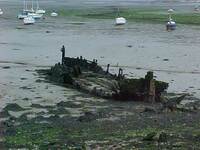In 1972, the USA passed a Coastal Zone Management Act which has led to many reforms and encouraged coastal states to consider 'sea defence' in a broad landscape planning context. Multiï¾disciplinary design teams are now responsible for multiï¾objective projects. The design objectives include the protection of life and property, energy production, recreation, transportation, food production, wood production, national defence and the conservation of ecological, cultural and aesthetic values. The Act, which led to a major shift in emphasis from wetland drainage and macroï¾engineering to the more natural technology of beach recharge, habitat conservation, and biological engineering is discussed in a Special Issue of the Journal of the American Planning Association (Journal of the American Planning Association 1985). With agricultural land becoming less valuable, there is now discussion of 'managed retreat'. Embankments are breached or allowed to decay. Old fields become new marshlands.
In 1993 and 1995, the UK government published a review and policies for coastal planning (MAFF, 1993a, 1993b, 1995). The government confessed that earlier policies had ignored natural and social factors but, in its statement of aims, reasserted the primacy of defence:
To reduce risks to people and the developed and natural environment from flooding and coastal erosion by encouraging the provision of technically, environmentally and economically sound and sustainable defence measures (MAFF 1993a).
Risk reduction and defence are wholly inadequate as goals for any landscape planning exercise. But the MAFF reports did call for a series of 'voluntary strategy plans' for coasts. They suggested:
Shoreline management plans: for defence of the shoreline
Coastal zone management plans: to help resolve competing pressures in the coastal zone
Catchment management plans: to help resolve competing pressures in river catchments
Voluntary plans can be useful - if their objectives are sufficiently broad. Human evolution took place at the water margin and coasts remain the most vital places (Crawford & Marsh, 1989). They should be treated as special landscape planning zones with a great emphasis on conserving and creating public goods. As beside rivers, we require public access, nature conservation, habitat creation, scenic conservation and scenic restoration. If agriculture and forestry are to receive financial subsidies, coastal fields and forests should be subsidised in very special ways. If building is to be allowed, it should be a special type of building. Coasts have beauty, magic and power. Reverence is the approach of choice.



